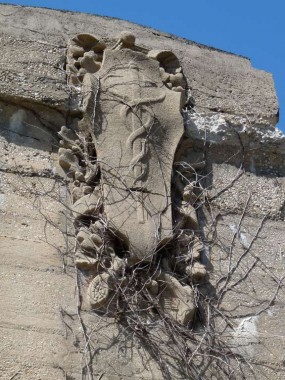The New York, Westchester & Boston Railway in the northeast Bronx celebrated its centennial in 2012. When conceived in 1872, it was assumed that it would eventually reach Boston, but instead at its lengthiest, it ran from southern Mott Haven in the Bronx to two terminals in Westchester County, at White Plains and at Port Chester. Construction was delayed for a few decades by the Panic of 1873, essentially a depression. Once emerging from receivership in the early 1900s, the railroad began anew in 1906 and built north, with the northernmost stations at Rye and Port Chester opening in 1928 and 1929. When most stations opened in 1912, the NYW&B was considered state of the art for its time, taking power from overhead lines, no grade crossings, high platforms to enable comfortable boarding, and spacious, architecturally attractive ticket offices/station houses.
Many of those stations stand as abandoned ghosts today, while some have been adapted for subway use: after the line went bankrupt in 1937, the City of New York saw a golden opportunity to expand service into Pelham Gardens and Eastchester, and purchased the NYW&B right of way, stations, and tracks. After making modifications like adding a third rail, the NYW&B became the Dyre Avenue Shuttle in 1940, and after new tracks were installed to connect it with the White Plains Road el in the 1950s, the full-fledged Dyre Avenue Line, today the home of the #5 train.
Would that NYC had similar foresight and resources today, to convert abandoned or little-used rights of way such as the Queens Rockaway Branch and Bay Ridge NY &Atlantic branches into local rail or subway service.
The station house, as well as some of the railroad overpasses, bear the image of the NYW&B’s standard-bearer, the Roman messenger god Mercury, with his winged cap and symbol of a staff entwined with two snakes. Mercury is invoked when speed is a stock in trade; FTD, the flower delivery service, also uses him.
For more on the NYW&B, see this FNY page.
1/29/13
